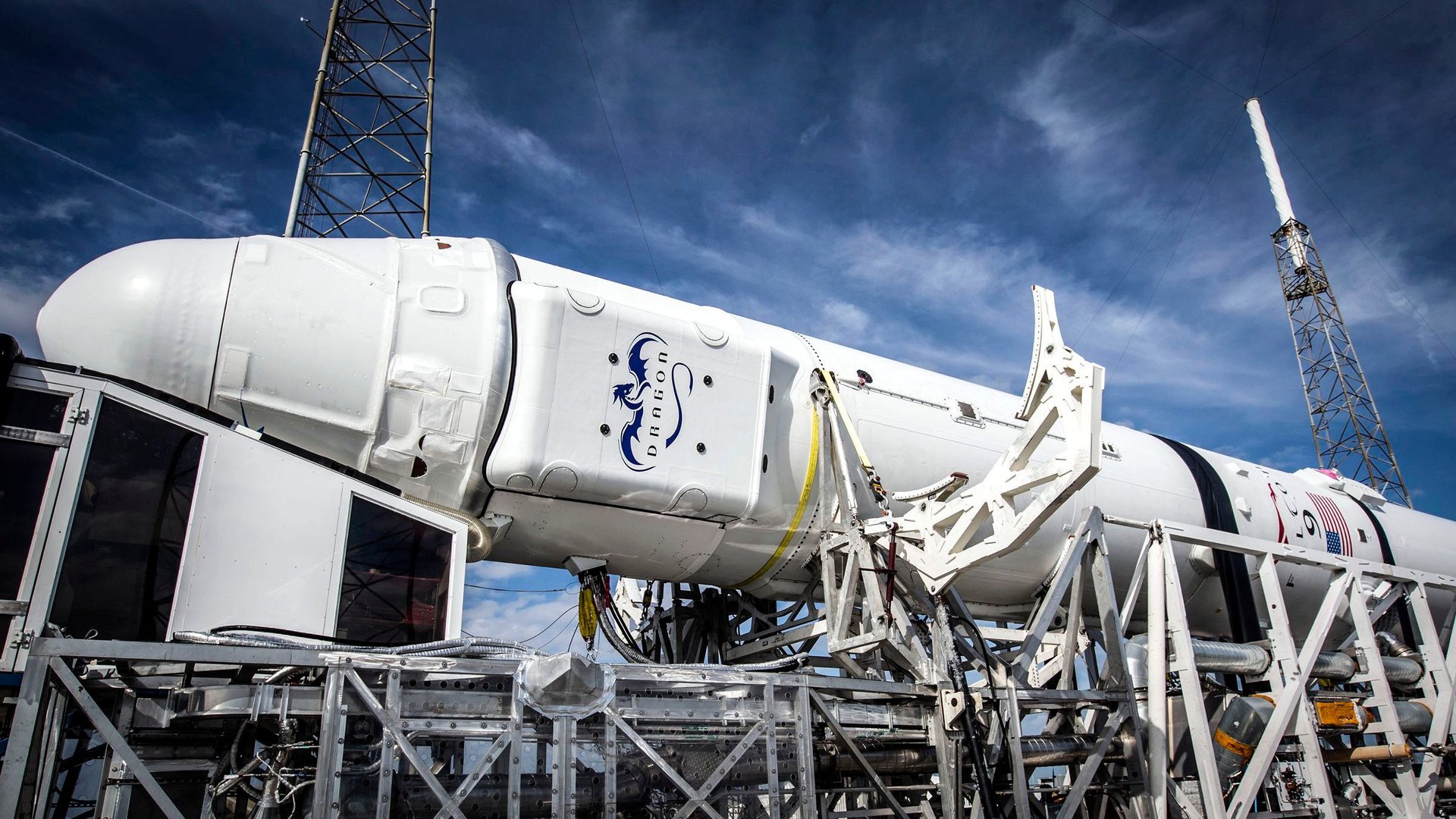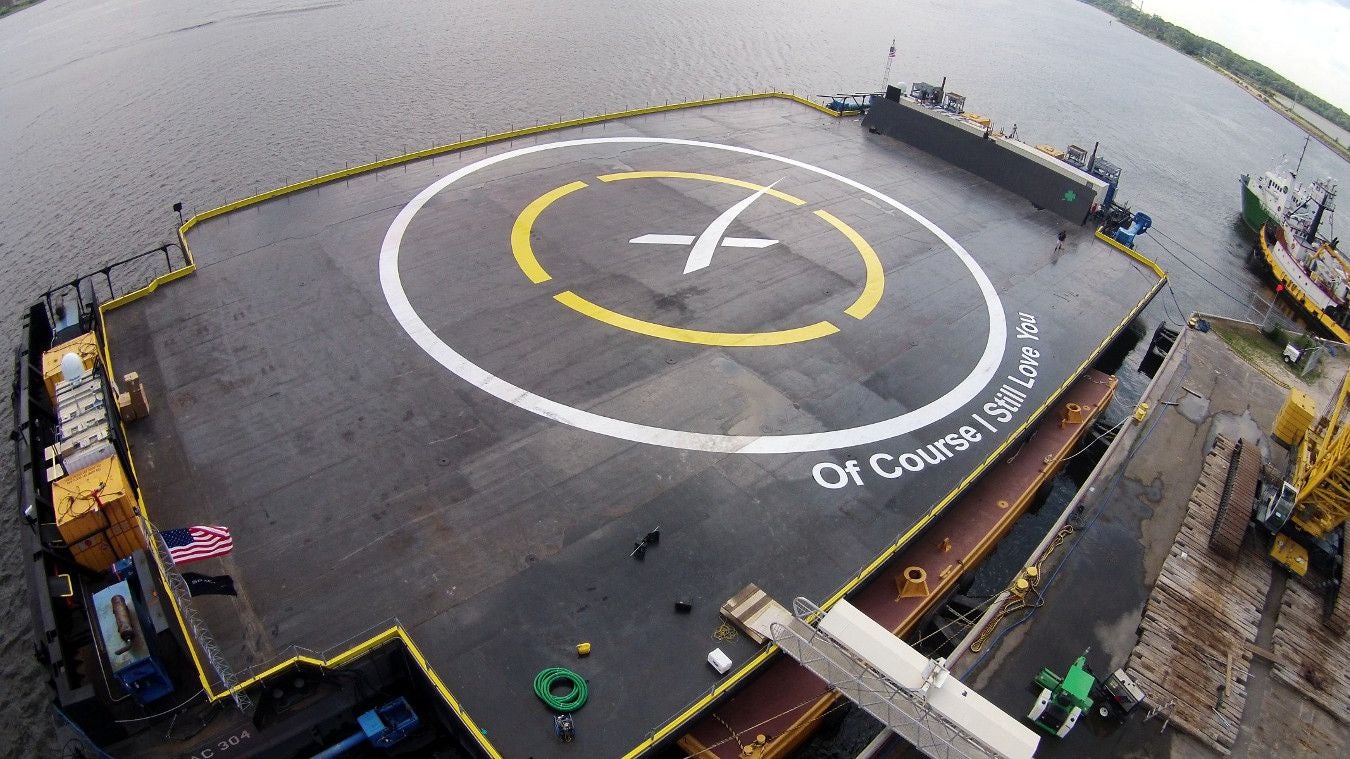SpaceX has two important missions to perform during Elon Musk’s birthday weekend rocket launch
Update, 6/28: This launch failed when the rocket came apart two minutes and nineteen seconds after launch; we are following the story here.


Update, 6/28: This launch failed when the rocket came apart two minutes and nineteen seconds after launch; we are following the story here.
Elon Musk will be starting his 44th birthday with a bang: At approximately 10:21 a.m. EST on Sunday, June 28, his company SpaceX will hit go on its 19th Falcon 9 rocket launch, with two big missions ahead of it.
Get the supplies to the International Space Station
Today’s main mission is bringing more than four tons of supplies and scientific experiments to the global outpost in orbit. The most recent attempt to re-supply ISS failed when a Russian autonomous spacecraft carrying five tons of food and fuel, Progress 59, malfunctioned and spiraled out of control in April. While two previous SpaceX re-supply missions in 2015 had succeeded, the last re-supply mission of 2014 failed spectacularly. In other words, the space station has received only half its expected cargo payloads in the last nine months.
“Both the Russian and USOS segments of the station continue to operate normally and are adequately supplied well beyond the next planned resupply flight,” a NASA spokesperson told Quartz after Progress 59 failed. ”The next mission scheduled to deliver cargo to the station is the seventh SpaceX commercial resupply services mission targeted for launch no earlier than June 19. It will carry about 5,000 pounds of science investigations and supplies.”
As you can see, rocket scheduling is an imprecise business, and we’re more than a week behind April’s expected launch date. NASA has made clear that the ISS is not in any danger of running out of necessities—with current supplies, they would move to “reserve level” at the end of July and run out in September, but eight other flights are scheduled this year. Now, SpaceX has an opportunity to demonstrate once again that the private spaceflight companies that are now handling re-supply work for the US can be reliable partners.
Indeed, listed among the ship’s cargo is equipment to allow the company’s manned spacecraft to dock with ISS.
Land the first stage of the Falcon 9 rocket on a floating platform
We’ve been talking about it all year: Can SpaceX land the first stage of its rocket on a floating platform, ushering in a world of reusable rockets and massive cost savings?
So far, no, but this time the company is confident that it has solved the problem. As you might recall, the last attempt to land the reusable first stage was this close to success:
What went wrong? According to SpaceX:
[A]bout 10 seconds before landing, a valve controlling the rocket’s engine power (thrust) temporarily stopped responding to commands as quickly as it should have. As a result, it throttled down a few seconds later than commanded, and—with the rocket weighing about 67,000 lbs and traveling nearly 200 mph at this point—a few seconds can be a very long time. With the throttle essentially stuck on “high” and the engine firing longer than it was supposed to, the vehicle temporarily lost control and was unable to recover in time for landing, eventually tipping over.
The company says that its engineers have taken steps to ensure the valve responds appropriately and, in the event of a malfunction, recovers more quickly. We’ll be watching to see if SpaceX can pull off what would be a major coup for its space access business.
This time, instead of “Just Read the Instructions,” which was damaged in the previous landing attempt, the floating drone ship acting as target is named “Of Course I Still Love You.” Both are named after ships in the book ”The Player of Games.“
